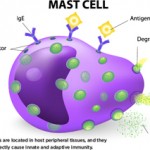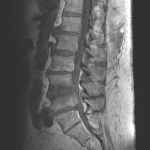The researchers found painful discs were more likely (53.3%) to have mast cells than were cadaveric autopsy samples (19.3%). In other words, discs that were associated with lower back pain were more likely to have mast cells than cadaveric discs. When the investigators looked more closely at the structures of the intervertebral discs, they found the NP of the intervertebral discs removed from patients suffering lower back pain tended to have increased expression of stem cell factor relative to cadaveric control NPs. The authors concluded from this that the mast cells in the painful discs had been upregulated.
Next, the researchers evaluated the effect of soluble factors secreted from mast cells on bovine intervertebral disc cells and found the presence of mast cells was associated with significantly increased expression of IL-6 and the enzyme ADAMTS5 in NP cells relative to bovine intervertebral disc cells cultured in the absence of mast cells. They then asked the reverse question: “Could the intervertebral discs secrete factors that could influence the mast cells?” They found that mast cells placed on healthy bovine annulus fibrosus cells had decreased expression of key inflammatory and pro-angiogenic genes. The mast cells also demonstrated less neo-angiogenesis formation when they were placed on healthy bovine annulus fibrosus cells.
The authors conclude their paper by suggesting that mast cells may be a potential target for low back pain therapy.
Lara C. Pullen, PhD, is a medical writer based in the Chicago area.
Reference
- Wiet MG, Piscioneri A, Khan SN, et al. Mast cell-intervertebral disc cell interactions regulate inflammation, catabolism and angiogenesis in discogenic back pain. Sci Rep. 2017 Oct 2;7(1):12492. doi: 10.1038/s41598-017-12666-z.

